Mecca stands among the world's ten most visited cities, drawing over 10.8 million international visitors yearly. This holiest city of Islam rises 277 meters above sea level, nestled 70 kilometers inland from Jeddah along the Red Sea coast. Muslims worldwide turn to this sacred epicenter for spiritual guidance and fulfillment.
The metropolitan expanse houses approximately 2.4 million residents, positioning Mecca as Saudi Arabia's third most populous urban center. Remarkably, during the Islamic month of Dhūl-Ḥijjah, the city's population swells to triple its normal size as faithful pilgrims arrive for Hajj. Masjid al-Haram dominates the city's heart, encompassing the revered Kaaba—a structure Islamic tradition attributes to Abraham and Ishmael's construction. This architectural marvel accommodates an astounding 1.2 million worshippers at once, a testament to its grandeur and spiritual significance.
The Ṣirāt Mountains embrace the city's perimeter, while summer temperatures frequently surge beyond 49°C, creating a challenging yet spiritually rewarding environment. Mecca maintains its sacred exclusivity—non-Muslims may not enter its boundaries—while embracing careful modernization. The 20th and 21st centuries have witnessed substantial improvements to the city's infrastructure, meticulously designed to welcome and support the ever-growing numbers of pilgrims seeking spiritual connection in this hallowed place.
Mecca's spiritual heritage extends through millennia of Islamic tradition to the era of Prophet Ibrahim (Abraham). This desert valley's sacred status emerges from profound narratives that continue to shape the religious consciousness of over 1.8 billion Muslims across the globe.
Islamic accounts narrate how Ibrahim transported his wife Hajar (Hagar) and their infant son Ismail (Ishmael) to present-day Mecca, leaving them in this desolate wilderness at Allah's command. The valley initially stood barren, devoid of water sources and human habitation. When their meager water reserves were depleted, Hajar frantically searched for water to quench her child's thirst.
Islamic doctrine recognizes Ismail as both messenger and prophet, explicitly mentioned in the Qur'an (19:54). Following their settlement in Mecca, Ibrahim would journey periodically to visit his family. Upon Ismail reaching maturity, Ibrahim returned bearing a divine mandate that would eternally consecrate this desert locale as humanity's most hallowed ground.
The Kaaba embodies Islam's spiritual nucleus. Qur'anic text declares it the first House of Worship established for mankind, while Islamic tradition asserts that Ibrahim and Ismail reconstructed it following divine guidance. Qur'anic verses specifically confirm that Ibrahim and Ismail "raised the foundations" of the Kaaba.
Before Islam's advent, the Kaaba functioned as a polytheistic sanctuary housing numerous tribal deities. Historical documentation suggests a structure existed at this location dating back to the 5th century. However, when Prophet Muhammad conquered Mecca in 630 CE, he sanctified the Kaaba, eliminating all idols and restoring it to monotheistic veneration.
Pilgrims circumambulate the sacred structure in an area known as the Mataaf. The Kaaba itself remains draped with a cloth called the Kiswah, which undergoes annual replacement except during the Day of Arafah.
The miraculous genesis of the Zamzam well stands as perhaps the most poignant tale within Mecca's spiritual foundations. Desperately seeking water, Hajar ran between the hills of Safa and Marwa seven times. After her seventh circuit, Islamic tradition recounts how the angel Jibreel (Gabriel) appeared and struck the earth, causing water to miraculously surge forth.
This remarkable well measures approximately 30 meters in depth and between 1.08 to 2.66 meters in diameter, continuously supplying water to millions of pilgrims each year. Water extraction originally relied on ropes and buckets, but since 1964, the well's opening has been relocated to a basement chamber behind protective glass panels.
The Bani Jurhum tribe from Yemen later discovered this water source and sought Hajar's permission to settle nearby. They respectfully inquired, "Do you allow us to stay with you?" She consented with the condition: "Yes, but you will have no right to possess the water." Subsequently, a community flourished around this desert spring, gradually evolving into the prosperous city of Mecca.
Hajar's extraordinary perseverance and the miraculous well live on through the Sa'i ritual during Hajj and Umrah, where pilgrims replicate her desperate search by traversing between Safa and Marwa seven times.
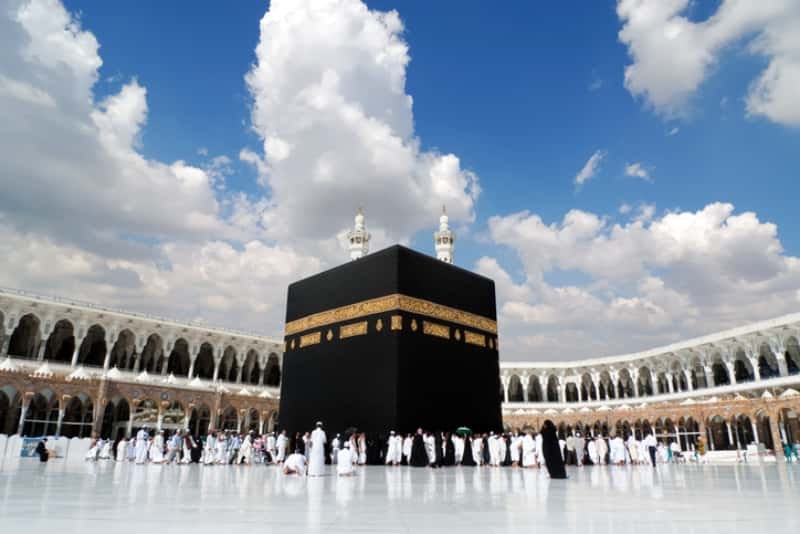
Mecca occupies an unrivaled position in Islamic devotion, transcending geographical boundaries to serve as the spiritual nucleus for Muslims across the globe. This sacred city embodies the very essence of Islamic faith, drawing believers toward its hallowed ground through both physical pilgrimage and daily spiritual connection.
The Kaaba—reverently known as "Baytullah" (House of God)—stands as the definitive focal point determining qibla, the direction Muslims worldwide face during their five daily prayers. Draped majestically in black silk kiswa, this cube-shaped structure houses the venerated Black Stone. Pilgrims fulfill the sacred obligation of Tawaf by circumambulating the Kaaba seven times counterclockwise, a ritual essential for completing both Hajj and Umrah pilgrimages. Islamic tradition holds that Abraham and his son Ishmael erected the Kaaba as the earliest house of worship dedicated exclusively to Allah. Throughout history, the structure has undergone numerous repairs and reconstructions, most significantly following damage sustained during the first siege of Mecca in 683 CE.
Hajj constitutes the fifth pillar of Islam, unfolding annually from the 8th through 12th day of Dhul Hijjah—the final month of the Islamic calendar. This monumental pilgrimage draws 2-3 million Muslims representing over 183 countries. Islamic doctrine mandates that every able-bodied adult Muslim possessing sufficient financial means must perform Hajj once in their lifetime. Umrah, frequently described as the "minor pilgrimage," permits completion year-round and centers primarily on rituals within the Grand Mosque. Both sacred journeys necessitate entering ihram—a state of ritual purity—before arriving in Mecca.
Masjid al-Haram extends beyond merely housing the Kaaba, encompassing numerous sacred sites within its expansive grounds. The world's largest mosque accommodates 1.2 million worshippers simultaneously. Within its rectangular central courtyard, pilgrims conduct their Tawaf around the Kaaba. Additional sacred elements include the station of Abraham (maqām Ibrāhīm), the Zamzam well, and passages to al-Ṣafā and al-Marwah hills where pilgrims perform the sa'y ritual. Prayers offered within this sanctuary carry greater spiritual reward than those performed elsewhere.
Rising 634 meters above sea level, Jabal al-Nour ("Mountain of Light") stands 4km northeast of Masjid al-Haram. The mountain's summit cradles the Cave of Hira, where Prophet Muhammad received his initial divine revelation from Angel Jibreel. These first revealed verses began with "Read in the name of your Lord who created" (Surah Al-Alaq). Approximately 5,000 pilgrims ascend this mountain daily during the Hajj season. While not mandated as part of Hajj rituals, countless visitors seek spiritual contemplation at this site where Islamic revelation began.
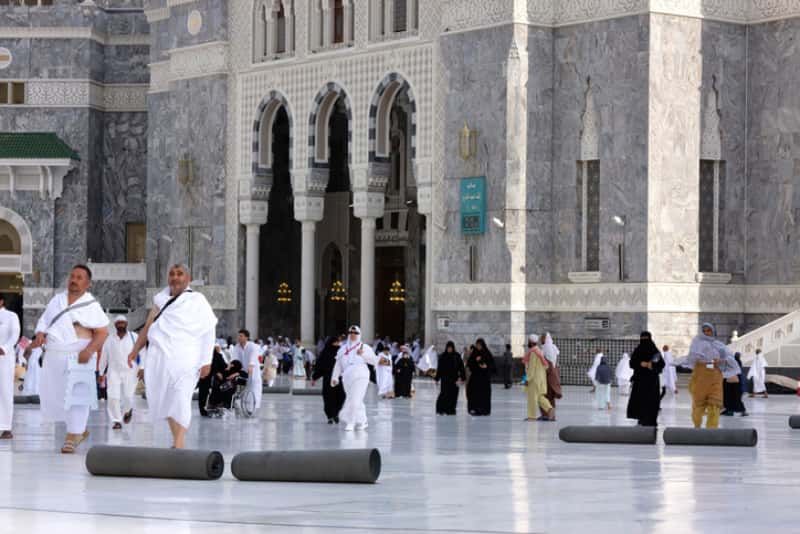
Mecca's physical landscape has undergone remarkable evolution over the past twenty years. Urban planners and architects have reshaped this sacred city while honoring its spiritual essence, creating an unprecedented blend of ancient sanctity and contemporary functionality.
The Mecca skyline tells a story of dramatic transformation. Where simple traditional homes once dominated, an impressive collection of modern edifices now reaches toward the heavens. Dominating this architectural symphony stands the 601-meter Makkah Royal Clock Tower within the Abraj Al-Bait complex—Saudi Arabia's tallest structure and the world's fourth highest building. This government initiative required a $15 billion investment and features seven towering hotels housing countless pilgrims throughout the year. Today's cityscape bristles with high-rise structures, while ambitious developments continue to emerge. The Masar Destination project exemplifies this ongoing growth, stretching 3.65 kilometers toward Masjid al-Haram. This corridor will accommodate 158,000 annual visitors and provide 24,000 hotel rooms when completed.
Saudi Arabia's response to the logistical challenges of pilgrim movement reveals meticulous planning. The Haramain High-Speed Railway now connects Mecca and Medina, offering swift passage between Islam's holiest cities. Within Mecca itself, the Makkah Metro (al-Mashaaer al-Mugaddassah Metro) demonstrates engineering precision, capable of moving 72,000 passengers hourly—approximately 3,000 pilgrims every 90 seconds. Supplementing these networks, the Mashaer Train links critical Hajj locations, allowing efficient travel between Mina, Arafat, and Muzdalifah.
Pilgrim numbers tell an extraordinary story of growth—from 100,000 visitors in the early 1950s to more than three million by 2012. This unprecedented increase demanded innovative crowd management solutions. Saudi authorities now deploy sophisticated technological systems, including extensive surveillance networks, intelligent analysis platforms, and mobile applications that monitor crowd movements and anticipate potential congestion points. The Makkah Road Initiative stands as a successful example of these efforts, streamlining pilgrim transport through enhanced infrastructure and contemporary services.
Vision 2030 reveals Saudi Arabia's ambitious plans to welcome 30 million pilgrims annually by the decade's end. This goal has prompted substantial governmental investment in Grand Mosque expansion, road improvements, and dedicated institutional structures like the Ministry of Hajj and Umrah to maintain orderly operations. Despite the scale of these modernization efforts, authorities maintain an unwavering focus on preserving the quintessential spiritual experience that draws faithful visitors from across the globe.
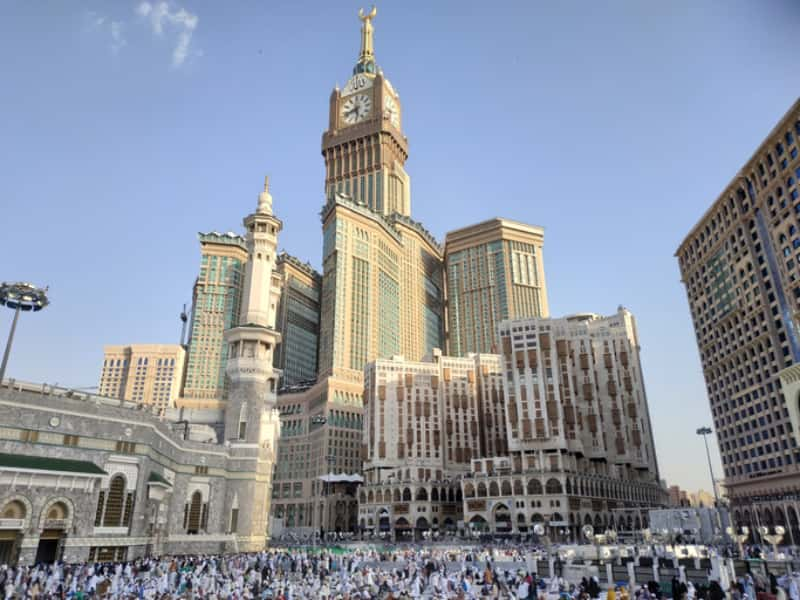
Mecca functions not merely as a spiritual nucleus but as a formidable economic engine generating approximately $12 billion annually through religious tourism. This pilgrimage-centered economy stands as Saudi Arabia's second-largest revenue source, surpassed only by oil.
Saudi authorities have positioned Hajj and Umrah as fundamental pillars in their economic diversification strategy. Vision 2030 outlines ambitious plans to welcome 30 million pilgrims yearly, potentially creating a $150 billion industry over five years. Unlike conventional economic sectors facing global competition, the pilgrimage bestows upon Saudi Arabia an uncontested monopoly. The economic magnitude manifests in accommodation pricing—guests at the Fairmont Makkah Clock Royal Tower might pay up to $4,000 for a single night during peak Hajj season.
Mecca Province houses approximately 8.5 million residents, claiming the title of Saudi Arabia's most populous region. The city proper contains roughly 2.2 million permanent inhabitants. What sets Mecca apart, however, is its function as a cultural crossroads where Muslims from 183 countries gather, fostering an unmatched environment for cultural exchange.
Provincial demographics reveal approximately 4.5 million Saudi citizens alongside 4 million foreign nationals. This remarkable diversity spawns multilingual communication—many Meccans acquire various languages through daily interactions with visitors and pilgrims.
Educational opportunities extend freely to all residents from primary through university levels. Umm al-Qura University, established in 1979, anchors the higher education landscape alongside specialized religious institutions. Educational attainment thrives with approximately 771,000 provincial residents holding bachelor's degrees.
Healthcare services mirror this accessibility, provided without charge to residents and pilgrims alike. The medical infrastructure encompasses 15 hospitals and 118 health centers operating under the Makkah Health Cluster. Specialized medical facilities strategically border the Grand Mosque, with Al-Haram Emergency Hospital maintaining round-the-clock service during Ramadan and Hajj seasons.
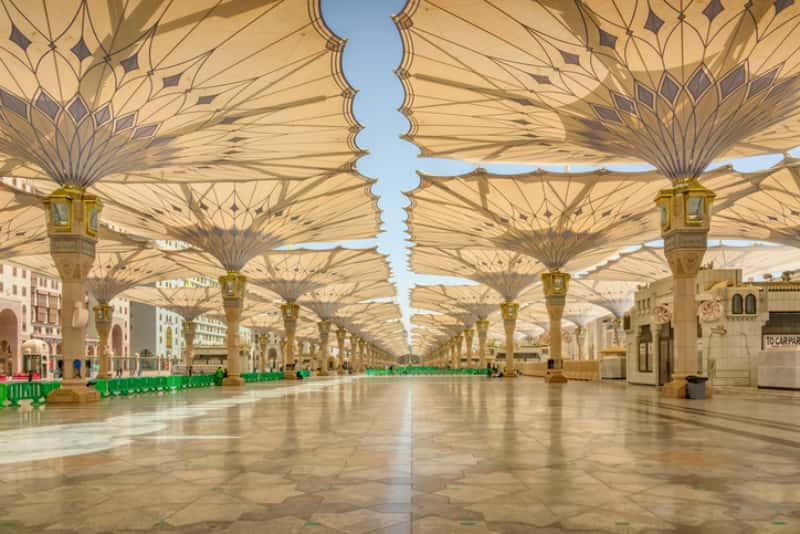
Mecca emerges as an extraordinary fusion of steadfast religious devotion and remarkable urban evolution. This sacred city has journeyed from its ancient incarnation as Bakkah to become a modern metropolis while safeguarding its spiritual essence. The Kaaba stands unwavering as the focal point for 1.8 billion Muslims worldwide, establishing the direction of daily prayers and serving as the centerpiece of pilgrimages that magnetize millions annually.
Economically, Mecca's influence transcends its religious importance. Saudi authorities have strategically positioned this unmatched spiritual monopoly as a foundational element of Vision 2030, forecasting a potential $150 billion contribution over five years. Visitors now witness continuous construction and expansion initiatives meticulously crafted to welcome increasing pilgrim numbers while preserving the sacred experience that defines this holy city.
Towering skyscrapers now command the skyline while sophisticated transportation networks efficiently shuttle millions of visitors, yet Mecca's fundamental spiritual purpose remains untouched. The city brilliantly demonstrates tradition and modernity existing harmoniously—cutting-edge crowd management technology now supports rituals whose origins stretch back thousands of years.
Mecca represents far more than a mere geographical location—it functions as a living cultural intersection where faithful from 183 nations gather, creating an environment unlike any other for spiritual fulfillment and human connection. This holy city flourishes simultaneously as Islam's spiritual heart and a showcase of Saudi Arabia's ambitious developmental vision.
Q1. What makes Mecca so significant in Islam?
Mecca is the holiest city in Islam, home to the Kaaba within the Masjid al-Haram. It's the birthplace of the Prophet Muhammad and the direction of prayer for Muslims worldwide. The city hosts millions of pilgrims annually for Hajj and Umrah, making it a spiritual epicenter for the Islamic faith.
Q2. How has Mecca changed in recent years?
Mecca has undergone significant modernization, featuring skyscrapers like the Makkah Royal Clock Tower, advanced transportation systems including the Haramain High-Speed Railway, and expanded facilities to accommodate millions of pilgrims. Despite these changes, the city maintains its sacred status and spiritual essence.
Q3. Are non-Muslims allowed to visit Mecca?
Non-Muslims are prohibited from entering Mecca. The city is exclusively reserved for followers of Islam, particularly during the Hajj pilgrimage and for performing Umrah.
Q4. What is the economic impact of pilgrimages to Mecca?
Religious tourism in Mecca generates approximately $12 billion annually, making it Saudi Arabia's second-largest revenue source after oil. The Saudi government aims to increase pilgrim capacity to 30 million annually by 2030, potentially creating a $150 billion industry over five years.
Q5. How does Mecca manage the influx of millions of pilgrims?
Saudi authorities employ advanced technologies for crowd management, including surveillance cameras, intelligent analysis systems, and smartphone applications. The city has also developed comprehensive transportation networks like the Makkah Metro and Mashaer Train to facilitate pilgrim movement between holy sites.
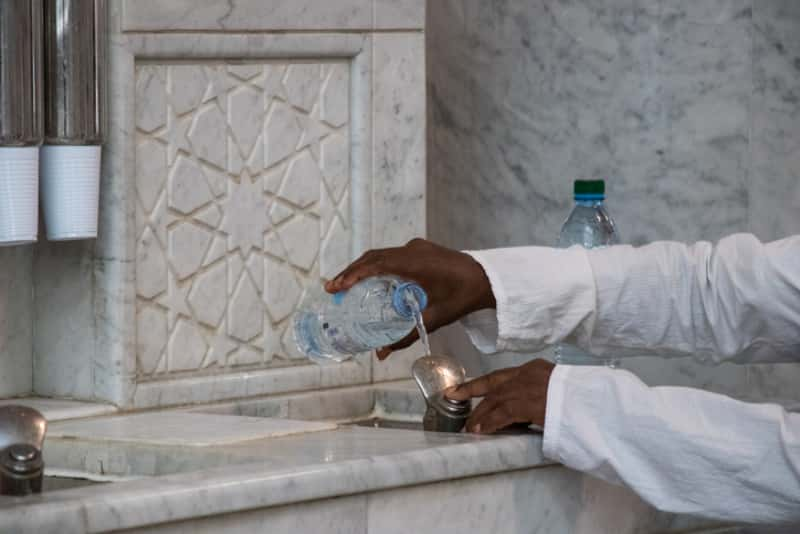
Find Related Tours


© Copyright 2024 Go Saudi Arabia Trips. All Rights Reserved.